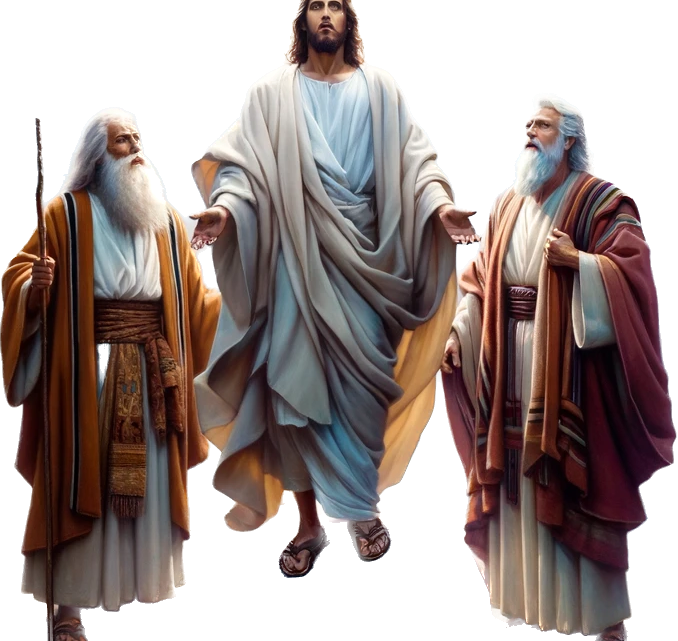The Transfiguration of Yeshua: Understanding Its Significance, Moses, Elijah, and Apostolic Responses


The Transfiguration of Yeshua is a cornerstone event in the New Testament. It’s not merely a demonstration of His divine nature, but a multi-layered occurrence that reveals intricate details about His mission, the fulfillment of the Law and the Prophets, and the voice of Yehovah echoing His earlier baptismal declaration. Let’s unpack this narrative, heavily referencing the Scriptures to underpin our exploration.
Why the Transfiguration Was Necessary
The event served as a watershed moment, reinforcing Yeshua’s divinity and preparing His disciples for the journey ahead.
Scriptures on Necessity
- Matthew 17:5: “While he was still speaking, a bright cloud covered them, and a voice from the cloud said, ‘This is my Son, whom I love; with him, I am well pleased. Listen to him!'”
- 2 Peter 1:16-18: Here Peter, one of the witnesses, reiterates the divine nature revealed during the Transfiguration, fortifying Yeshua’s mission.
Moses and Elijah: Law and Prophets
The appearance of Moses and Elijah is symbolic of the Law and the Prophets, asserting that Yeshua is the fulfillment of both.
Scriptures on Moses and Elijah
- Luke 24:27: Yeshua explicates how the Scriptures, beginning from Moses and all the Prophets, point to Him.
- Matthew 5:17: “Do not think that I have come to abolish the Law or the Prophets; I have not come to abolish them but to fulfill them.”
Moses: The Law Giver
Moses is emblematic of the Torah. His presence implies that Yeshua is not here to abolish the Law but to complete it.
Elijah: The Prophet
Elijah represents the Prophetic tradition. His presence signifies Yeshua as the ultimate realization of these prophecies.
Scriptures on Fulfillment
- Malachi 4:5-6: Elijah is prophesied to come before the Day of Yehovah.
- Deuteronomy 18:15: The promise of a Prophet like Moses, interpreted by many to refer to Yeshua.
The Apostles’ Response: Three Shelters?
The apostles, particularly Peter, expressed a desire to build three shelters—one for Yeshua, one for Moses, and one for Elijah (Matthew 17:4). Although well-intentioned, this suggestion perhaps showed a limited understanding of the event’s profound meaning at that time.
Scripture on the Shelters
- Matthew 17:4: Peter’s words, “Lord, it is good for us to be here. If you wish, I will put up three shelters—one for you, one for Moses, and one for Elijah,” reveal his initial response.
Yehovah’s Announcement: Echoing the Baptism
What’s fascinating is the voice from heaven during the Transfiguration, which mirrored the declaration made at Yeshua’s baptism, endorsing His divine Sonship and mission.
Scriptures on Yehovah’s Voice
- Matthew 3:17: At Yeshua’s baptism, a voice from heaven proclaimed, “This is my Son, whom I love; with him, I am well pleased.”
The similarity between the heavenly voice at the Transfiguration and Yeshua’s baptism further deepens the divine validation, marking both the inception and a crucial midpoint in His ministry.
Conclusion
The Transfiguration serves as a theological landmark, strengthening Yeshua’s divine mission and linking Him as the fulfillment of the Law and the Prophets. Peter’s idea of building three shelters, and the divine voice that echoed the pronouncement at Yeshua’s baptism, add additional dimensions to our understanding. Through a scriptural lens, the event stands as a rich and complex moment that provides profound insights for both historical and contemporary faith.
Note: Interpretations of these theological events can vary; therefore, always approach these topics with sensitivity, acknowledging the multifaceted views that exist.

